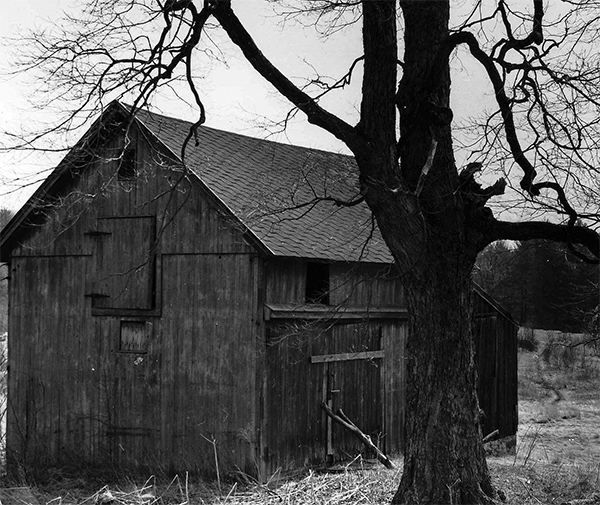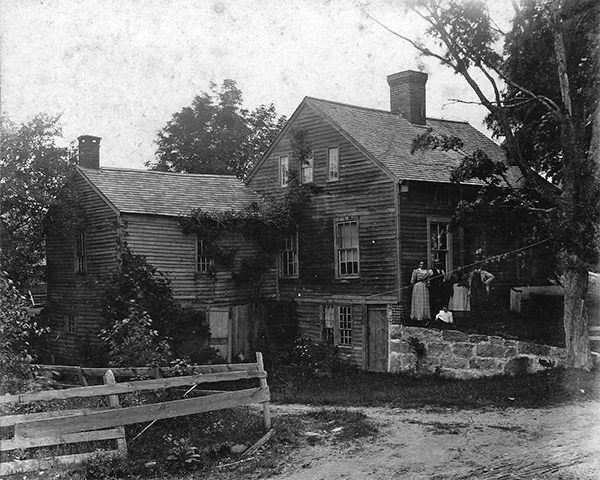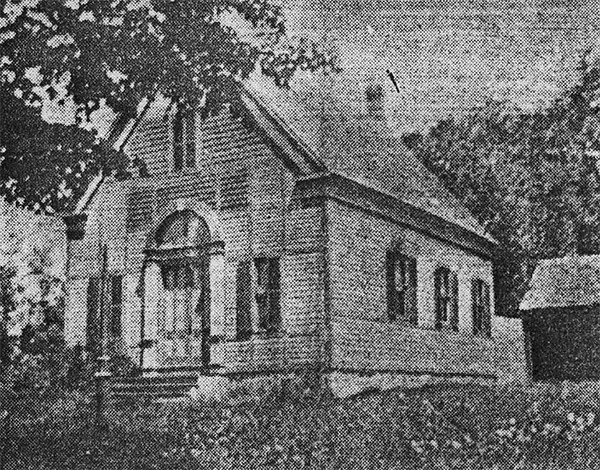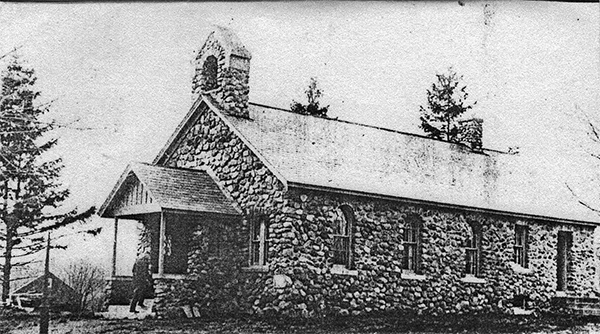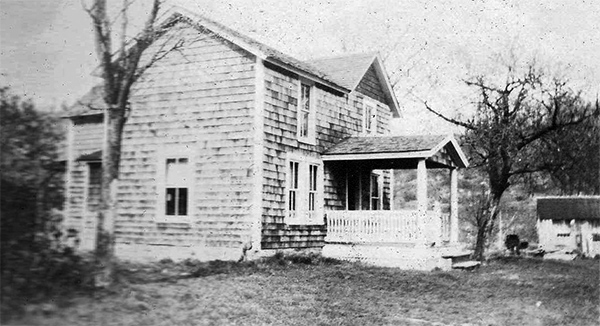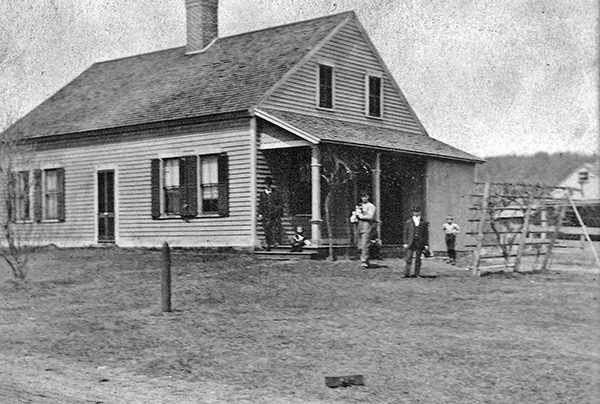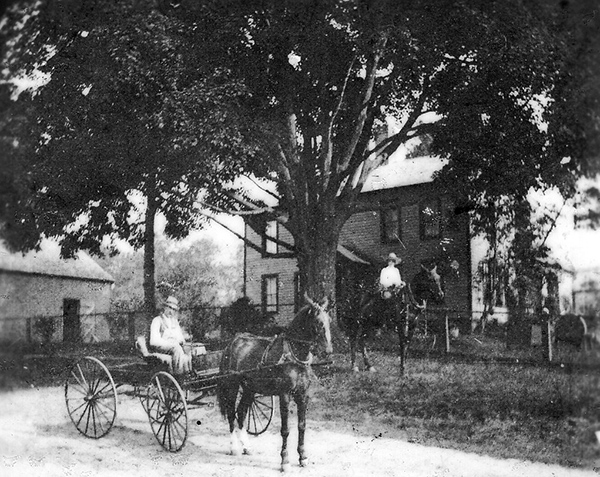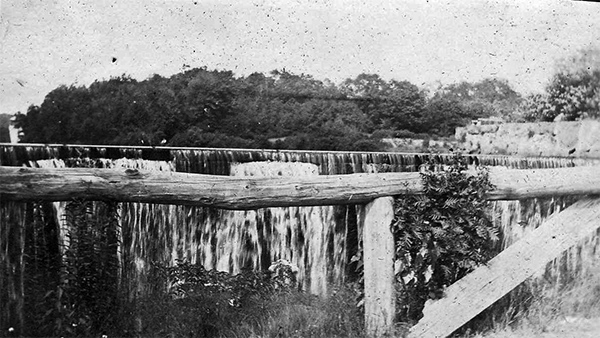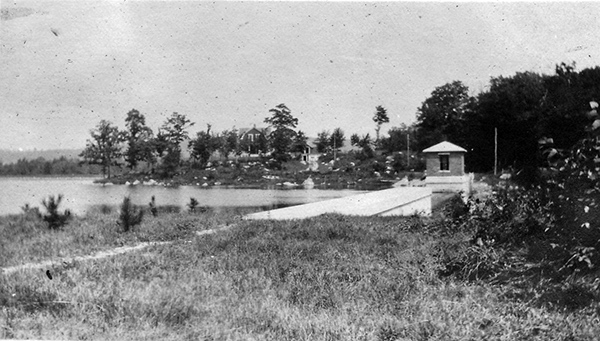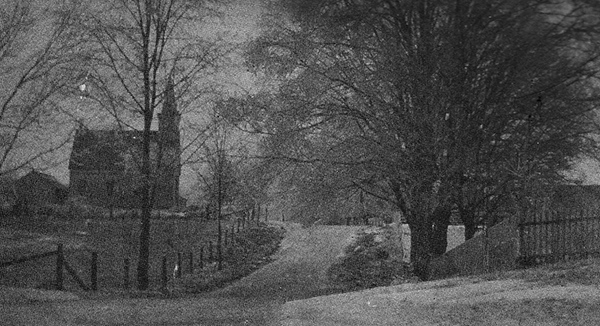|
|
||||||||||||
 |
 |
|
Wolcott Historical Society History for January 2015 By Florence Goodman The historic village of Woodtick has been the home to many well-known Wolcott settlers. The Frisbie family originally settled this area in 1759. Judah Frisbie for whom Frisbie School is named built a small frame structure here around 1773. There is a legend that credits Judah Frisbie for the name Woodtick. It was said that he was chopping wood to clear the land for his house and took off his jacket and placed it on a tree stump. At the end of the day his jacket was covered with ticks. Each time he went back to the area he referred to it as the place where the "wood ticks" were. Eventually it became known as "Woodtick."
This little village of Woodtick became prosperous because the powerful Mad River flowed through it; thus several mills were built along the river. In 1776 Judah Frisbie and Elnathan Thrasher operated a sawmill at this location. In 1790 they sold the mill, land and water rights to the Upson family. The Upson's built a stone, concrete and earthen dam, which created a 5½-acre man-made pond known as the Upson Millpond. In 1795 they built a home on the site. In 1857, Hezekiah Todd and a group of local men formed a company that acquired the millpond land and began to produce high quality paper at this site. Todd Road bears the name of this well-known family who had extensive land holdings in this section of town.
In 1872, Gustave Cornelis and his brother, Clement, emigrated from Belgium to Waterbury. They brought with them the secret of producing seamless tubing. Gustave first worked in Waterbury and learned the art of silver-plating, but later moved to Wolcott and purchased the Upson mill at Woodtick. His business began as a rolling mill where they cold-rolled silver plate on copper, which was used to make reflectors for vehicle headlamps. He later expanded the production to drawn tubing.
In 1912 the Mad River Water Company purchased land in this area. By 1917 construction began on the large man-made pond. It covered approximately 330 acres of land and was associated with the prominent Scovill Manufacturing Company, which needed large amounts of water to produce brass. Construction of the upper dam caused the Mad River to flood the land and form the Woodtick Reservoir. The water in the reservoir covered sections of two old roads; the present Scovill Road was originally part of Fairclough Road, which ran straight through to the intersection of Munson and Coe Roads. The dirt road where the Kiwanis Club Day Camp is located today was the other section of Fairclough Road. About one thousand feet of Fairclough Road was covered by water with the creation of the dam. Wolf Hill Road, which runs along the west side of the reservoir, was built to replace Fairclough Road.
The lower end of Bound Line Road, just below Coe Road to the intersection of Woodtick Road replaced the older section of Bound Line Road that was flooded by the new dam. Farm properties that belonged to Conrad Herbst, N. Hanson and D.L. Frisbie, as well as, the Timothy Root House that was on Fairclough Road were sold to complete this project. The construction of the Woodtick Dam and Reservoir changed the path of the Mad River and the physical characteristics of the land around it forever. Farms, roads, pasture lands and stonewall boundaries were lost to these floodwaters.
In those early years the Woodtick region did not have a church so residents either attended services at the Congregational Church in the Center of town or went to Waterbury to the Mill Plain Union Church. Eventually the minister from the Congregational Church in the Center held Sunday services at the stone schoolhouse on Nichols Road; attendance grew and the schoolhouse became too small. In 1886, Miss Harriet Juliana Hall, agreed to donate one half acre of land to the town for the purpose of constructing a building in the southwest district that would be utilized for church purposes only. The new chapel was completed in 1887 and enjoyed by all Woodtick residents until April 27, 1924 when a fire destroyed the building. It wasn't until 1927 that construction began on a new stone chapel to replace the old wooden structure.
The village of Woodtick has survived hardships as well as prosperity and still remains a vital section of our town today.
(Information for this article was taken from Wolcott, Connecticut 175th Anniversary 1796-1971 by John H. Washburne; A Salute To Two Centuries of Education in Wolcott, Connecticut, The Old Woodtick School in Wolcott, A Report on Its Present Condition and Proposed Restoration, The 1986 Historic Resources Inventory by J.P.Loether, The Woodtick Dam and Reservoir by Skye MacBroom and photographs from Clarence Atwood and Sharon Frigon.)
Todd Barn is located next to Woodtick Memorial on Woodtick Road. It was renovated by the Frigon family.
Timothy Root house was located on Fairclough Road. It was demolished when they built Woodtick Reservoir.
The original Woodtick Chapel built in 1886-87.
This stone chapel was built to replace the first chapel that was destroyed by fire in 1924.
The Old Nichol's Place located on the corner on Nichols and Fox Run Roads was originally a blacksmith shop. (Deb Dubois photo)
The 1795 Isaac Upson House was built next to the millpond. Currently it is the home of the caretaker at Woodtick Reservoir.
Hallock Farm (1896) was located on the corner of Diamond Terrace and Woodtick Road where Musano's is today.
The lower Woodtick Reservoir dam.
The Upper Woodtick Reservoir dam.
This view is from the entrance of Woodtick Recreation looking toward the "Ode Chapel" in March, 1898 in an ice storm.
To view past installments of the Wolcott Historical Society News, click here.
|
|
|
[Home]
[News]
[Purpose]
[Calendar]
[Museum]
[Membership]
[History]
[Contacts]
[Links]
All material at Wolcott Historical Society Web sites Copyright © 2000-2014 Wolcott Historical Society |
